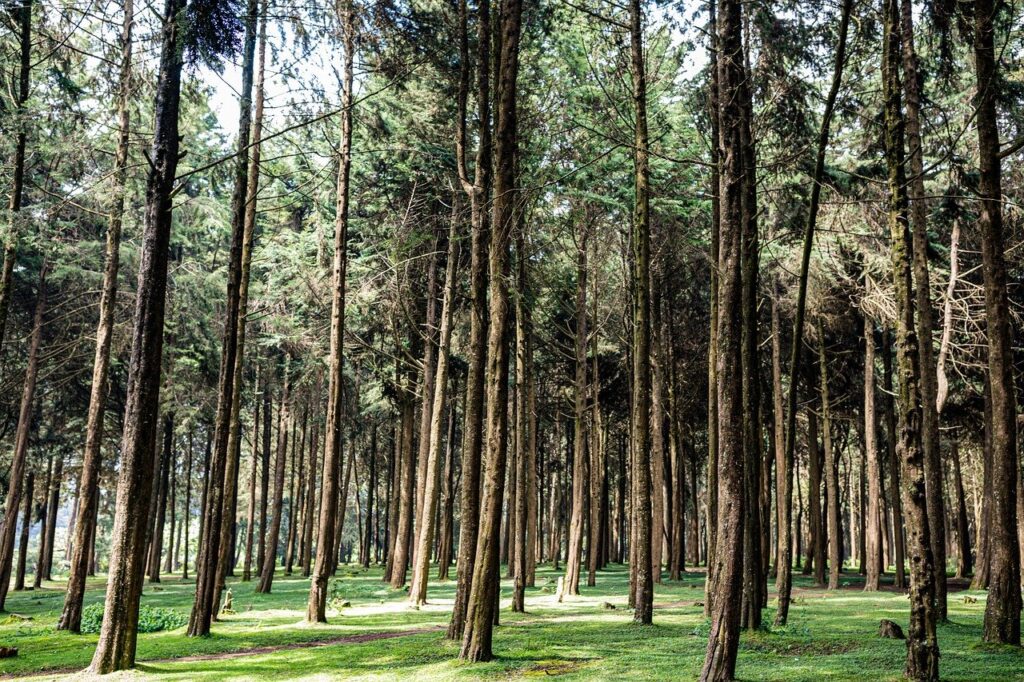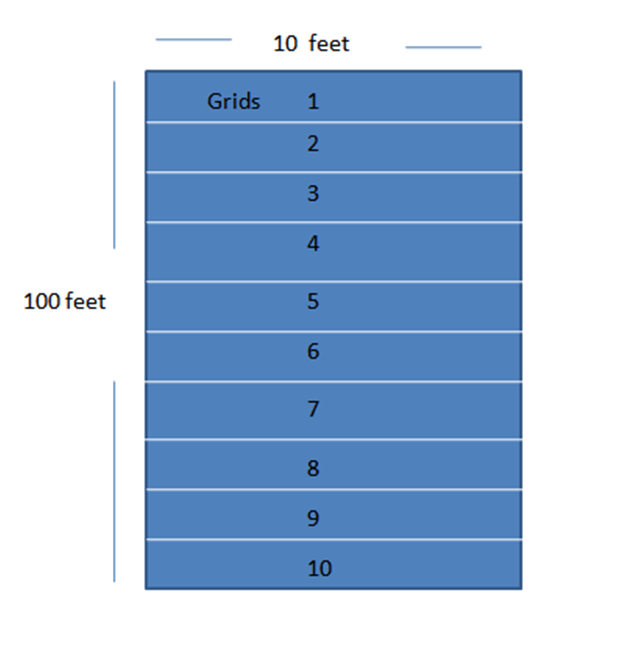
This post may contain affiliate links which means that gaqrdenworl247.in may make a small commission at no extra cost to you.
Synopsys: By adopting the Miyawaki Forest Method, communities and urban planners can effectively combat ecological degradation, foster biodiversity, and create green spaces that enhance the quality of life in urban areas. This method represents a significant advancement in ecological engineering, offering a viable solution to the challenges of modern environmental restoration.
Table of Contents
Miyawaki method invention
Dr Miyawaki refined, tested, and developed a method for potential vegetation of ecological engineering. Which is today known as the Miyawaki forest method.
Degraded Soils: This method refers to growing/restoring native forests by growing seeds of native plants on very degraded soil which is without humus. He restored 1300 sites in Japan and various tropical countries.
Urban Afforestation: Miyawaki planting method/ Miwaki plantation – The Miyawaki forest method is an ideal/ standard way to develop/ form urban forest in a short period.
You can say mini forest around the concrete development to get the fresh air. And to restore ecology and thus the environment as well.
In a traditional method, a typical forest takes more than 100 years to form a natural forest.
Dense Planting: The Miyawaki method involves planting trees very densely, mimicking natural forest conditions which promotes faster growth and stronger resilience.
Ecological Benefits: These mini-forests contribute to biodiversity, improve air quality, sequester carbon, and enhance the overall urban environment.
Rapid Growth: This miyawaki forest method can make forests within a short period of 20-30 years. You can see a forest-like appearance from within two years.
You can see the video below for an example of the miyawaki forest at Riverfront, Ahmedabad, Gujarat. Plantation was done in August 2019 and looks nearly like a forest in just 15 months in November 2020.
Tools and materials for Miyawaki forest plantation-
1 Chalk or lime powder
2 Shovel
3 Rope for marking borders
7 Water
8 Paper cutter
9 Jute rope to tie plants with a stick
10 4-5 feet long bamboo sticks for plant support
11 Dried grass/ leaves for mulching (half a kilo/ plant)
11 FYM
12 Rice Husk
13 Cocopeat
How to Do- Miyawaki planting method
For 1000 square feet area we require 300 plants for it.
First, excavate the land/ dig it bay 3 to 4 feet deep. If you are planning a large area you can dig it with a JCB machine. Now make a heap of digged soil.
Mix the FYM, rice husk, tobacco powder, and cocopeat-like perforating material in this soil.
Now after mixing all the stuff/ material in the soil relevel the same area with this soil.
Don’t compact this soil while leveling and we should avoid walking on it also.
After that make the grid by using rope and chalk powder as shown below.
Find the best lawn mower in India
Make markings for the plants in each grid every 1.5/2 feet in a triangular formation.
Dig the pits on this marking 1 foot wide and 1 foot deep.
Make the grid based on 30 pits if it is a 30-plant variety. Thus 30 varieties in each grid as shown in the below figure.

When planting is done fit the bamboo support to the plants’ required support.
Mulch the whole plantation area. And water the plantation after planting it
The best time for a miyawaki forest plantation is a month before monsoon. If you plant it in other seasons regularly water it once a day till they achieve 6 to 7 feet height.
Miyawaki forest doesn’t require maintenance after 2 years.
Points to note down During the Miyawaki plantation
If the soil is clay you can add vermicompost plus rice husk/ wheat husk/ soya husk.
If the soil is sandy you can add cocpeat for water holding and organic material like vermicompost in it.
Miyawaki forest also represents biodiversity by planting different native trees.
Tree varieties to select like a mix of flowering, fruiting medicinal, and timber varieties.
For native tree varieties, you can visit the nearest Agriculture institutes, and forest departments also.
But here we are providing you with a general list of trees/ plants adapted to our country.
Watering time before 9 AM in the morning and after 4 PM in the evening.
Do a wedding at least for two years as and when required.
After two years of maintenance rule is “ no maintenance is the best management”
Miyawaki Forest plant list
| Sl.No | Common Name | Botanical Name | Family |
| 1. | Toothed leaf limonia | Naringi crenulata | Rutaceae |
| 2. | Rubber vine | Cryptostegia grandiflora | Apocynaceae |
| 3. | Fish-killer tree | Barringtonia racemosa | Lecythidaceae |
| 4. | Water apple | Syzygium samarangense | Myrtaceae |
| 5. | Asoka tree | Saraca asoca | Caesalpiniaceae |
| 6. | Peanut butter fruit | Bunchosia argentea | Malpighiaceae |
| 7. | Pomegranate | Punica granatum | Lythraceae |
| 8. | Firebush | Hamelia patens | Rubiaceae |
| 9. | Rudraksham | Elaeocarpus angustifolius | Elaeocarpaceae |
| 10. | Indian Ash tree | Lannea coromandelica | Anacardiaceae |
| 11. | Lasora | Cordia dichotoma | Cordiaceae |
| 12. | Red fig | Ficus carica | Moraceae |
| 13. | Blue Jacaranda | Jacaranda mimosifolia | Bignoniaceae |
| 14. | Black portia | Thespesia populnea | Malvaceae |
| 15. | Common Mallow | Thespesia lampas | Malvaceae |
| 16. | Sea grape | Coccoloba uvifera | Polygonaceae |
| 17. | Conocarpus | Conocarpus erectus | Combretaceae |
| 18. | Beggars bowl | Crescentia alata | Bignoniaceae |
| 19. | Ficus | Ficus aurata | Moraceae |
| 20. | Travelers’s palm | Ravinala madagascariensis | Musaceae |
| 21. | Milkwood | Alstonia macrophylla | Apocynaceae |
| 22. | Child-life tree | Putranjiva roxburghii | Putranjivaceae |
| 23. | Divi divi | Caesalpinia coriarea | Caesalpiniaceae |
| 24. | Kaim | Mitragyna parvifolia | Rubiaceae |
| 25. | Gian crepe-myrtle | Lagerstroemia speciosa | Lythraceae |
| 26. | Rosy trumpet tree | Tabebuia rosea | Bignoniaceae |
| 27. | Sappan wood | Beancaea sappan | Mimosaceae |
| 28. | African Locust tree | Parkia biglandulosa | Mimosaceae |
| 29. | Turkey Berry | Solanum torvum | Solanaceae |
| 30. | Beach Gardenia | Guettarda speciosa | Rubiaceae |
| 31. | Indan Aloewood | Aquilaria malaccensis | Thymelaeaceae |
| 32. | Mexican Lilac | Gliricidia sepium | Fabaceae |
| 33. | Terminalia metaly | Terminalia metallica | Combretaceae |
| 34. | Dyer’s oleander | Wrightia tinctoria | Apocynaceae |
| 35. | Yellow oleander | Cascabela thevetia | Apocynaceae |
| 36. | Ghaf tree | Prosopis cinerea | Mimosaceae |
| 37. | West Indian Cherry | Malpighia glabra | Malpighiaceae |
| 38. | West Indian pea | Sesbania grandiflora | Fabaceae |
| 39. | Indian Elm tree | Holoptelea integrifolia | Ulmaceae |
| 40. | Areca nut | Areca catechu | Arecaceae |
| 41. | Bamboo | Bambusa arundinacea | Poaceae |
| 42. | Silk cotton tree | Ceiba pentandra | Malvaceae |
| 43. | Beechwood | Gmelina arborea | Verbenaceae |
| 44. | Mahogany | Swietenia macrophylla | Meliaceae |
| 45. | Malabar Neem | Melia dubia | Meliaceae |
| 46. | Arjun tree | Terminalia arjuna | Combretaceae |
| 47. | Indian Siris | Albizia lebbeck | Mimosaceae |
| 48. | Indian Mast tree | Monoon longifolium | Annonaceae |
| 49. | Rosewood | Dalbergia latifolia | Fabaceae |
| 50. | Silver oak | Grevillea robusta | Proteaceae |
| 51. | Paradise tree | Simarouba glauca | Simaroubaceae |
| 52. | Teak | Tectona grandis | Verbenaceae |
| 53. | Belliric Myrobalan | Terminalia bellirica | Combretaceae |
| 54. | Andaman redwood | Pterocarpus marsupium | Fabaceae |
| 55. | Sisso | Dalbergia sissoo | Fabaceae |
| 56. | Jamun tree | Syzygium cuminii | Myrtaceae |
| 57. | Red sanders | Pterocarpus santalinus | Myrtaceae |
| 58. | African mahogany | Khaya senegalensis | Meliaceae |
| 59. | Big silk cotton | Bombox ceiba | Malvaceae |
| 60. | Cinnamon | Cinnamomum malabatrum | Lauraceae |
| 61. | Prickly custard apple | Annona muricata | Annonaceae |
| 62. | Flame of the forest | Butea monosperma | Fabaceae |
| 63. | Gulmohar | Delonix regia | Caesalpiniaceae |
| 64. | Cashew | Anacardium occidentale | Anacardiaceae |
| 65. | Green Champa | Artabotrys hexapetalus | Annonaceae |
| 66. | Black pepper | Piper nigrum | Piperaceae |
| 67. | Ebony wood | Diopyros ebenum | Ebenaceae |
| 68. | Pink shower | Cassia javanica | Caesalpiniaceae |
| 69. | Cherry | Prunus avium | Rosaceae |
| 70. | Indian butter tree | Madhuca longifolia | Sapotaceae |
| 71. | Spanish cherry | Mimusops elengi | Sapotaceae |
| 72. | Orchid tree | Bauhinia variegata | Caesapliniaceae |
| 73. | Indian Coral tree | Erythrina grandiflora | Fabaceae |
| 74. | Cannonball tree | Gouropita guianensis | Lecythidaceae |
| 75. | Indian cork tree | Millingtonia hortensis | Bignoniaceae |
| 76. | Indian beech tree | Pongamia pinnata | Fabaceae |
| 77. | Alexandrian laural | Calophyllum inophyllum | Calophyllaceae |
| 78. | Golden shower | Cassia fistula | Caesalpiniaceae |
| 79. | Champak tree | Magnolia champaca | Magnoliaceae |
| 80. | Yellow flame tree | Peltophorum pterocarpum | Caesalpiniaceae |
| 81. | Rain tree | Samanea saman | Mimosaceae |
| 82. | African Tulip tree | Spathodea campanulata | Bignoniaceae |
| 83. | Sacred Fig tree | Ficus religiosa | Moraceae |
| 84. | Cluster Fig | Ficus racemosa | Moraceae |
| 85. | Banyan | Ficus benghalensis | Moraceae |
| 86. | Curry leaf | Murraya koenigii | Rutaceae |
| 87. | Common jujube | Zizhiphus jujuba | Rhamnaceae |
| 88. | Guava | Psidium guajava | Myrtaceae |
| 89. | Jack fruit | Artocarpus heterophyllus | Moraceae |
| 90. | Madras thorn | Pithecellobium dulce | Mimosaceae |
| 91. | Mango | Mangifera indica | Anacardiaceae |
| 92. | Neem | Azadirachta indica | Meliaceae |
| 93. | Indian Mulberry | Morinda citrifolia | Rubiaceae |
| 94. | Ceylon wood | Manilkara hexandra | Sapotaceae |
| 95. | Sandal wood | Santalum album | Santalaceae |
| 96. | Sapodilla | Manilkara zapota | Sapotaceae |
| 97. | Custard apple | Annona squamosa | Annonaceae |
| 98. | Singapore Cherry | Muntingia calabura | Malvaceae |
| 99. | Tamarind | Tamarindus indica | Caesalpiniaceae |
| 100. | Wood apple | Limonia acidissima | Rutaceae |
| 101. | Stone apple | Aegle marmelos | Rutaceae |
| 102. | Indian Almond | Terminalia catappa | Combretaceae |
| 103. | Hairy Fig | Ficus hispida | Moraceae |
| 104. | Star gooseberry | Phyllanthus acidus | Phyllanthaceae |
| 105. | Indian gooseberry | Phyllanthus emblica | Phyllanthaceae |
| 106. | Acid lime | Citrus aurantifolia | Rutaceae |
| 107. | Henna tree | Lawsonia inermis | Lythraceae |
| 108. | Chinese Chaste | Vitex negundo | Verbenaceae |
| 109. | Tree of sadness | Nyctanthes arbor-tristis | Oleaceae |
| 110. | Charcoal tree | Trema orientalis | Cannabaceae |
Conclusion
By adopting the Miyawaki Forest Method, communities and urban planners can effectively combat ecological degradation, foster biodiversity, and create green spaces that enhance the quality of life in urban areas. This method represents a significant advancement in ecological engineering, offering a viable solution to the challenges of modern environmental restoration.

